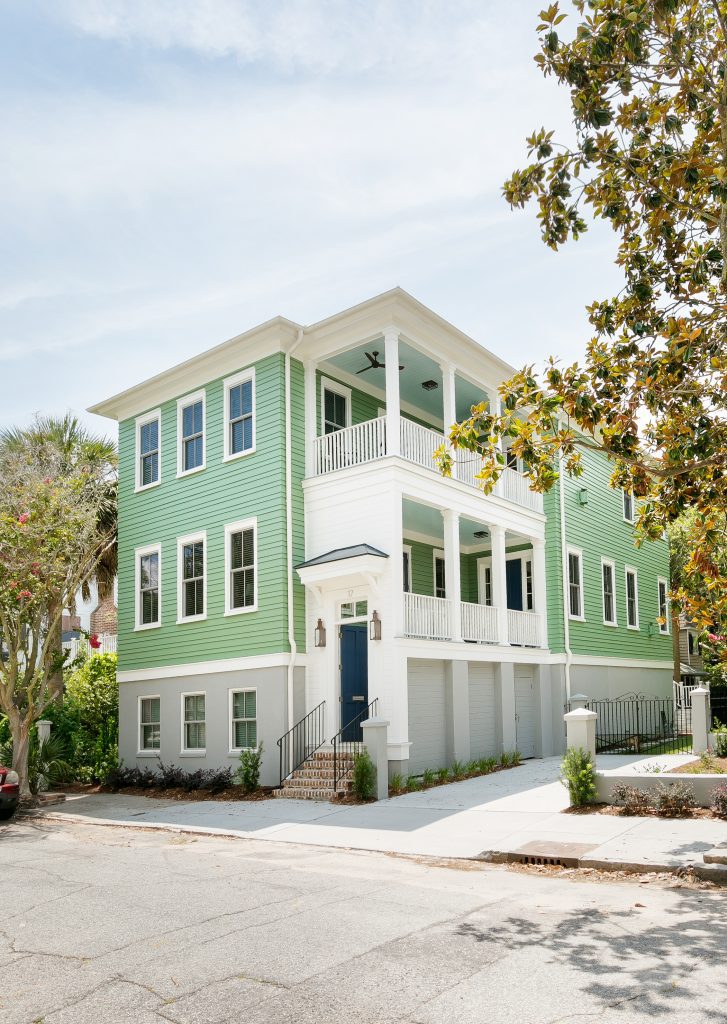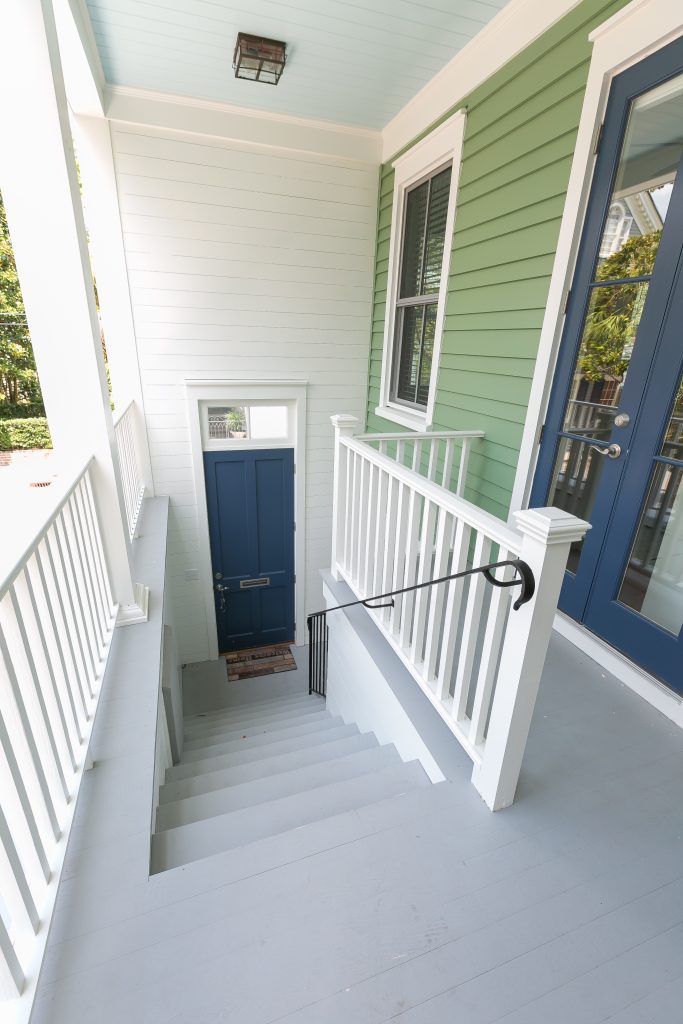
We’ve recently launched a new podcast hosted by our publisher Tim Barkley. Brilliant Builders + Renovation Sensations is a way for us to share information about different facets of the home industry. This time we talk with Dan Logan from Stono Construction about what homeowners should consider when choosing a lot.
Stono Construction is a residential home builder with a focus on custom home and large scale renovations and additions. When the opportunity to go into business together presented itself, long-time friends Dan and John Logan became business partners.
For the last five years, Dan and John have been working together to grow the company. Dan works in the office and John out on job sites. “It’s a good match because we never step on each other’s toes,” adds Dan.

Charleston Home + Design Magazine (pg. 77) recently featured a project that Stono Construction completed. This particular home won a Carolopolis Award for New Construction for the Preservation Society of Charleston. “This project was a tear down near Colonial Lake,” Dan mentions. This house was a little bungalow that just wasn’t working for the homeowners. It flooded three times in four years. This couple decided it was time to build their Charleston style home. Laura Altman of LFA Architecture was an important member of the team as she helped get the design approved by the BAR. Stono Construction built this home to fit in with the neighborhood and look like it had been there for over one hundred years.
It’s Q + A time. In the following sections, Dan will answer questions about every facet of choosing a lot, who to work with, and more. We’ll begin with easements and setbacks.


There’s a lot of information that needs to be collected. One of the most important things is to go to the site and make observations of the characteristics. More specifically, when you’re standing on the street, does it look like the lot is on high ground? Does it look like drainage would go to the proper place behind it – to a marsh or swell? There are so many low lots in Charleston and a lot of those are not in flood zones.
When you’re on a stand-alone lot, you want to make sure the drainage is going to end up going the right way. Another thing to look at when choosing a lot is the general drainage infrastructure. Are there swales, ditches, or sidewalks with pipes underneath? Also consider the shape of the lot. You need to look at setbacks and easements.
A setback comes off the property line. It’s another line that you can’t build anything on top of. You can do landscaping but the building footprint cannot exceed the setbacks. Each lot and neighborhood will have different setbacks so you should conduct a survey when choosing a lot. If it’s a lot in the middle of other lots and they’re all basically the same size, you can pretty much assume your lot will have the same setbacks.
An easement is sort of like a right-of-way. An example would be a utility easement. You may have seen AT&T or Comcast digging up someone’s front yard. Nine times out of 10, they dig between the easement. So that’s why you wouldn’t want to put a big parking area there or a really nice fence, or expensive bushes or trees. They have every right to destroy that to get to the underground utilities. You would not be able to build on that anyways, as the setbacks would take into consideration easements that exist.
HOA sometimes has easements for access to a body of water behind the house that they need to get to. Sometimes the easements are expired but you have to ask your real estate attorney to actually remove them from the property. The main thing is to make sure you can do what you want; and that may be something that you put in your contingency contract if that information isn’t readily available when choosing a lot.
I’m sure you have seen plenty of houses where the overhead power lines go across the back of your property, and then there’s another house behind yours. Then they have to go and start cutting trees. They are going to come to your property and they have the right to. They can come on your property and start cutting trees off the power lines, or if one of the power lines breaks in a storm, they will come and fix that. If they have to tear down your fence to get back there, that might happen.
So, generally speaking, your easement will only be on the front of your property for the purpose of utilities running up and down the street. But, there are plenty of situations where the easements go up the side of your property or across the back. It’s just something you have to make sure you can check. You don’t want to buy a lot just to realize you can’t put something there. A survey will tell you all that. I cannot stress enough, if you buy a lot you can’t do it without getting a formal survey – you just have to.


Correct, and we see that all the time. Different municipalities have tree ordinances. The city of Charleston, for instance, tends to be a little more lenient than some other places. It’s very important to know what jurisdiction the lot you’re buying is in. Then, above and beyond that, if it’s in a neighborhood that has an HOA, you need to make sure they don’t have restrictive covenants that are more strict on the tree ordinance than the municipal one.
It’s a great thing right now to be able to get a construction-to-permanent loan; or in some cases, people get a lot loan that can be converted to construction and then to permanent. Generally speaking, once you start going vertical, that’s when the builder gets involved with the lot loan and the lender – at least if you’re buying your own lot. I’d say about 70 percent of the people that call us with large projects are going to be working with a lender. We’ve found it’s a lot easier to work with a local or regional bank that’s doing that loan, than it is to work with a much larger bank.
More often than not, the lender is going to require the builder to sign a three way contract between the homeowner, builder, and lender that will govern things like release of liens and liability and things like that. It will also govern how payments are made and the draw schedule. When working with a lender, they usually don’t issue more than six draw reimbursements. Sometimes we require a larger deposit, as we sometimes have to float all the expenditures up until the first inspection. The lender does the inspections of the work progress. Once the inspection is done, they give you a percentage complete of all the items on the draw schedule. Then, they are only going to issue funds based on those percentages.


This is a payment. In our case, we always do progress payments so our invoices show percentages in each work area. The first draw usually includes most of the permitting and planning stuff, most of the foundation, and in many cases the framing as well. When you get a $600,000 house, that’s easily an $80,000 invoice for the first one. When I send a bank notice that I’m ready for them to confirm we are complete with the progress items, they usually send out an appraiser. Some lenders have their own internal inspectors that do this.
I hate to say it but I guess that happens. There are some people out there that I guess are desperate or whatever. In some instances, the bank is worried that something could happen and they are just trying to cover their interest in the property.
We are usually able to get a bank to issue an initial deposit but sometimes it takes a little extra work and convincing, since they’re essentially forwarding a bunch of money though none of the work is done yet. I don’t know if they have some back in thing for the client to make that possible, but we have been successful working through that. For me, it comes down to cash flow. If I have to pay $40,000 for a framing package, and the back won’t pay me for another month, I’m floating that money. I usually use a customer deposit to float those kinds of things.
If you have any questions about choosing a lot for your family, call Stono Construction at (843) 805-4141 or visit stonoconstruction.com.
